Minisforum NPB7 Performance
First off, we wanted to start this by saying that the Windows desktop is super responsive with a 14-core/20-thread Core i7-13700H processor. Sometimes we get lost in charts, but this is a mini PC that offers a great desktop experience.
Python Linux 4.4.2 Kernel Compile Benchmark
This is one of the most requested benchmarks for STH over the past few years. The task was simple, we have a standard configuration file, the Linux 4.4.2 kernel from kernel.org, and make the standard auto-generated configuration utilizing every thread in the system. We are expressing results in terms of compiles per hour to make the results easier to read:
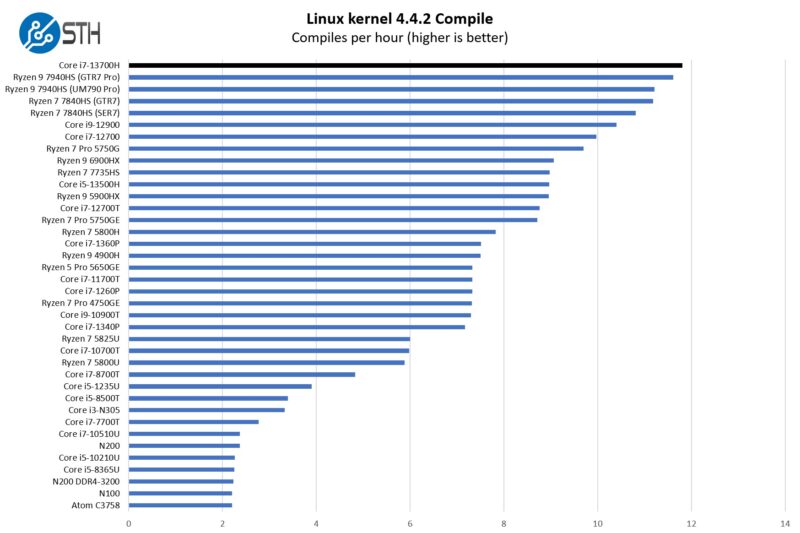
Something that many do not realize is that the Core i7-13700H is a speedy CPU. We are well beyond dual Intel Xeon E5-2690 V2 levels of performance in a low-power desktop CPU.
7-zip Compression Performance
7-zip is a widely used compression/ decompression program that works cross-platform. We started using the program during our early days with Windows testing. It is now part of Linux-Bench.
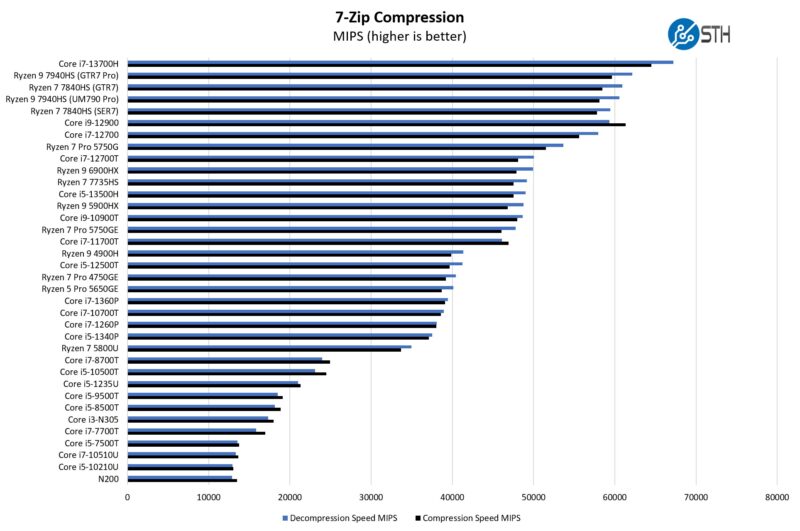
Again, Intel performs well against the AMD alternatives in the space.
OpenSSL Performance
OpenSSL is widely used to secure communications between servers. This is an important protocol in many server stacks. We first look at our sign tests:
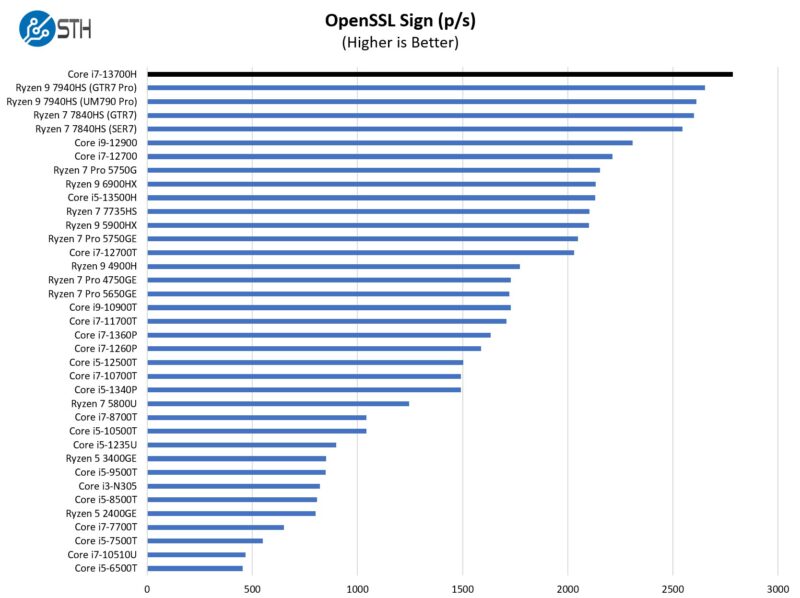
Here are the verify results:
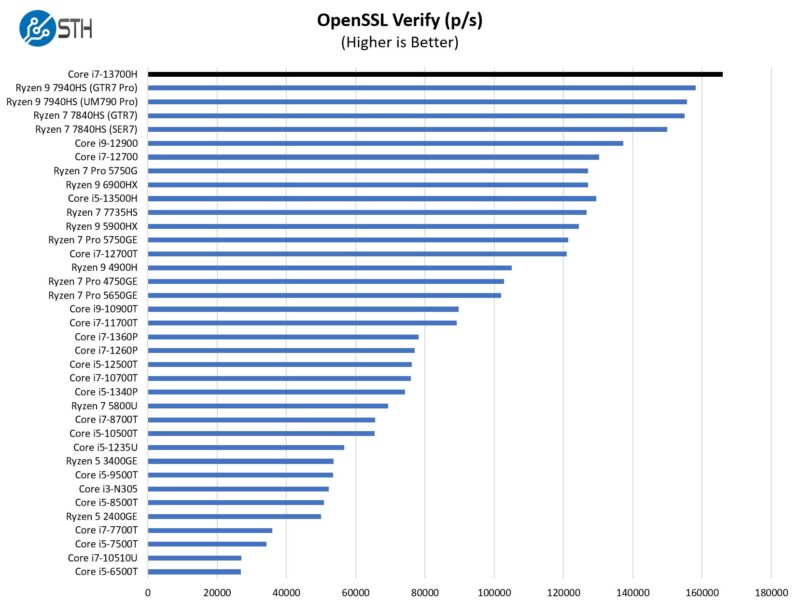
Again, with 6x P-cores and 8x E-cores, we can get a lot of performance from this part.
Geekbench 5 and Geekbench 6
In Geekbench 5, we saw the single-threaded performance of the Minisforum NPB7 as slightly lower than the UM790 Pro. The big gains were in multi-threaded performance.
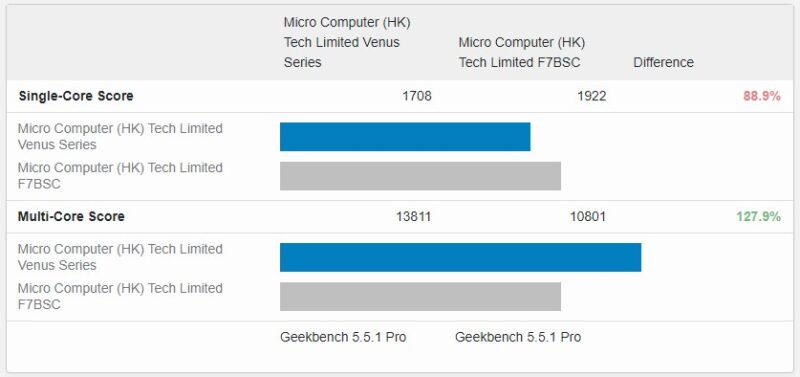
Geekbench 6 closed the gap on the multi-threaded side, but we saw directionally the same performance.
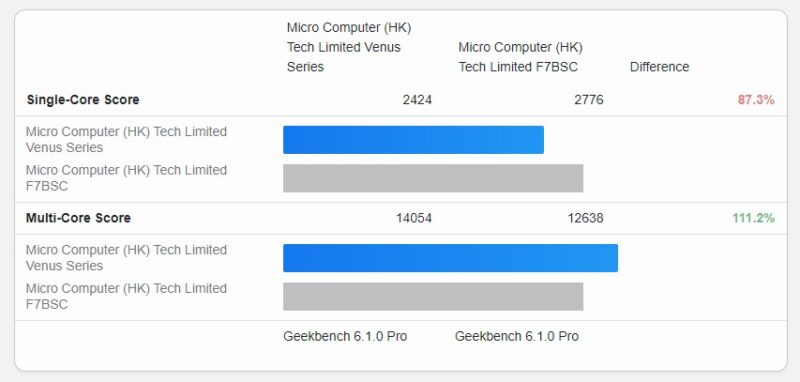
We are just going to quickly note here that the Intel Xe graphics onboard have solid video CODEC support, but in raw performance for things like gaming, we would get an AMD RDNA 3 CPU.
Kingston PCIe Gen4 NVMe SSD Performance
Sometimes the SSDs in these mini PCs are very poor. Here is a quick CrystalDiskMark run with the 1TB drive.
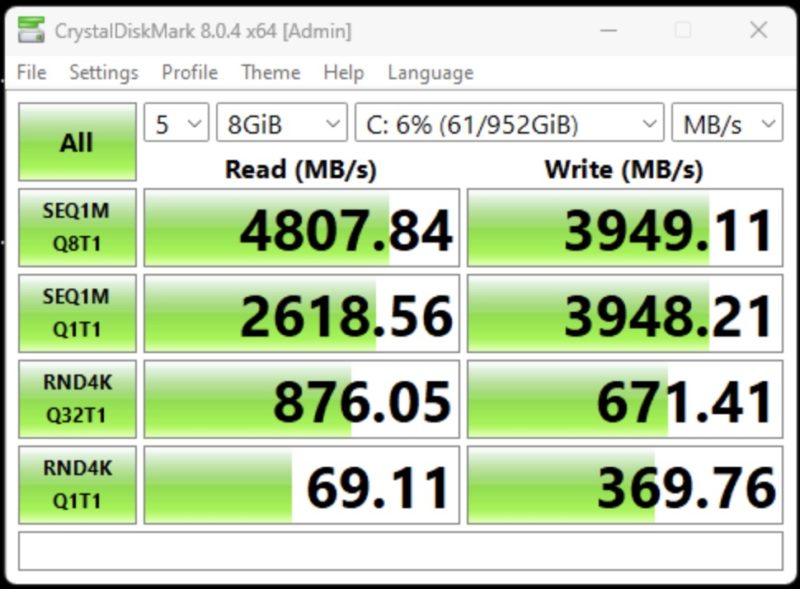
As we have seen in most of these mini PCs, we do not get near 7GB/s maximum sequential speeds. At the same time, we have something way faster than SATA and PCIe Gen3 drives.
All of this performance is great, but let us get to the power consumption.




I tested the NPB7 vs the NPB5 and was expecting a good (decent?) value bump for my workload which was a sustained multi threaded load. It had a meaningful difference for the initial load but then stepped down and ultimately wasn’t sufficiently better than the NPB5 for the cost.
As such, I stuck with the NPB5. I’m also running Linux Mint 21.2 desktop on it and am very, very happy. It is indeed really responsive. Additionally, again for my workload, Linux performed about 8-10% faster than on Windows 11. Back to Linux Mint… I had to update to a 6.x kernel to get audio working. I suspect the same is true on the NPB7. Easy but not out of the box easy.
One other consideration on the NPB7 5 and 7 is the location of the m.2 2230 underneath the m.2 2280 port. I wish they’d not stacked them so that using the m.2 2230 for something other than wifi was easier. Niche use case, I know, but I keep wondering about using that port for other purposes and it’s just hard to see how to fit anything, admittedly hacky, in. The NAB5 and 6, OTOH, don’t have them stacked. I really like those as well but no usb4 (or unofficial TB).
Power is a bit high but under actual configurations for me, not much different than AMD configs I’ve worked with. More for sure but probably only 3w or so which is $3/year in my part of the world.
Oh, and worth noting that GPU wasn’t a meaningful factor for me. AMD platforms looked a lot better if I weighted that higher. I ultimately decided the NPB5 met me needs best today and it _seems_ like eGPUs on the secondary market are plentiful and _should_ be a good workaround if I decide later that I care. But there’s some risk to that bet.
Correction – I was confusing the layout with another mini PC. The M.2 2230 is NOT under the 2280 on the NPB5 or NPB7.
This was very handy. I bought a NPB6 which was on sale on Amazon, with an i7 13620H, slightly fewer cores, 32GB and a 1TB SSD. I put an 8TB SATA SSD in it (once I found the tiny sata cable which fell out of the box), created some Hyper-V VMs and let my dev work commence! Cheaper than my Azure VMs. I may yet buy another for windows server 2019 or 2022…